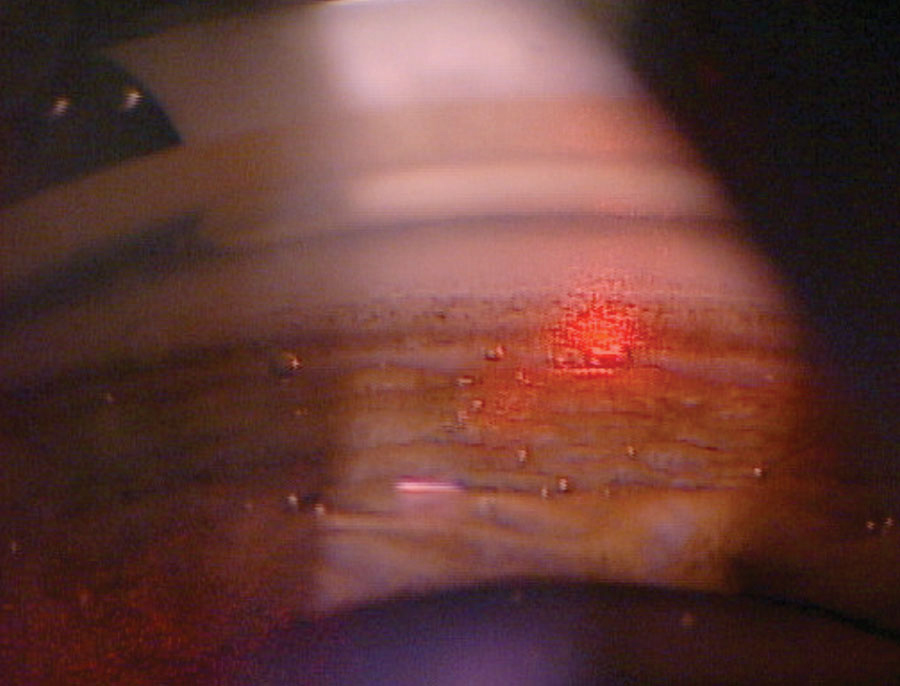 |
| At all three follow-up time intervals (one to two months, three to six months and 12 months), each group showed a 15% to 20% mean IOP reduction from baseline after SLT. However, the 12-month visit showed less IOP reduction in immunosuppressed patients. Photo: Nate Lighthizer, OD. Click image to enlarge. |
More and more glaucoma experts consider selective laser trabeculoplasty (SLT) a first-line therapy due its cost effectiveness and potentially superior clinical outcomes compared with drop therapy. But it is contraindicated in certain patients? Researchers at the Mayo Clinic of Rochester, MN recently hypothesized that, if an immune or inflammatory response is required for IOP reduction following SLT, then the efficacy in immunosuppressed glaucoma patients would be diminished compared with a control glaucoma population not on systemic immunosuppressive medications. The team determined that patients in the systemic immunosuppressive therapy group showed equivalent early IOP-lowering after SLT compared with a control group, but the treatment response was diminished at one year.
All patients who underwent SLT at the Mayo Clinic over a five-year period were identified. Patients on systemic immunosuppressive medications at the time of SLT were compared with control patients not receiving systemic immunosuppressive medications. The primary endpoints of this study were the percentage IOP reduction at one to two, three to six and 12 months. There were 108 eyes of 72 patients that underwent SLT in the immunosuppressed group and 1,997 eyes of 1,417 patients in the control group. The immunosuppressive therapy group and control group were similar in demographics, glaucoma type apart from steroid response glaucoma, glaucoma severity and glaucoma treatment history.
There was no significant difference in age-adjusted change in IOP between groups at the first postoperative visit one to two months following SLT (-18.8% vs. -16.0%) or three to six months following SLT (-15.2% vs. -18.3%). However, at 12 months following SLT, the IOP reduction in the immunosuppressive therapy group was significantly less compared with the control group (-15.1% vs. -20.3%). There was no difference between groups in the number of additional treatments during the study intervals.
“This study provides much needed efficacy data of SLT in an immunosuppressed population which is currently lacking in the medical literature,” the researchers wrote in their paper, published in Journal of Glaucoma. “Further studies investigating IOP regulation after SLT in immunosuppressed patients are needed to better characterize the specific underlying cellular pathways involved.”
“While this study is unable to confirm or reject a particular immune-mediated pathway involved in the IOP-lowering effect of SLT, the differences in IOP between groups suggests that the immune system does play a role in IOP regulation in patients who underwent SLT,” they added. “It is possible that a patient’s underlying diagnosis may also alter their immune-mediated response to SLT either separately from or in addition to the immunosuppressive agent itself.”
Kaplan TM, Hammer JD, Kohli D, et al. Efficacy of selective laser trabeculoplasty in patients on systemic immunosuppressive therapy. J Glaucoma. June 26, 2023. [Epub ahead of print]. |

